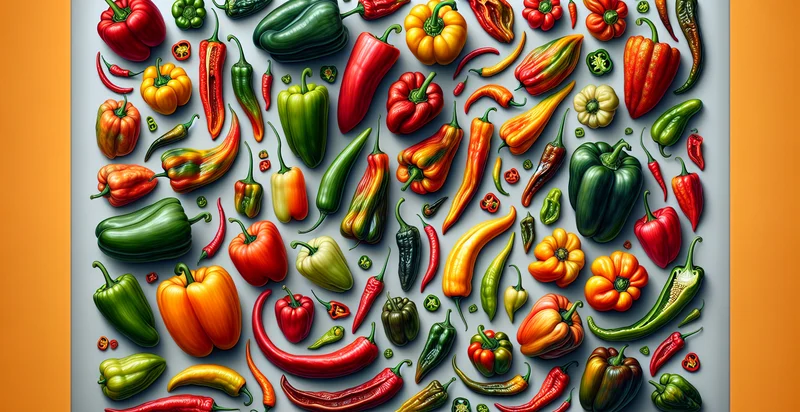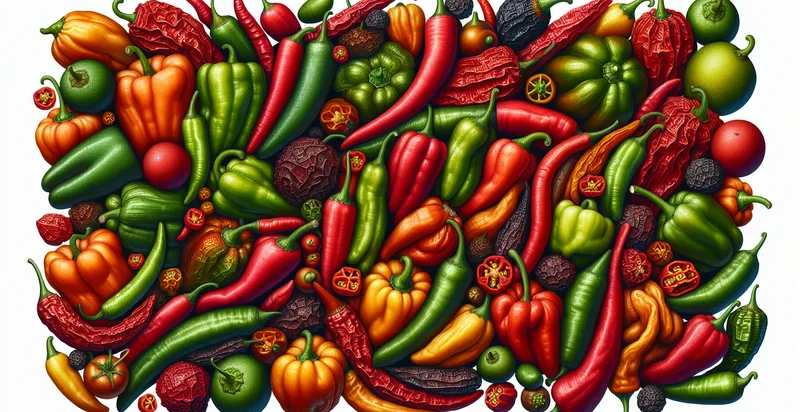Identify pepper species
using AI
Below is a free classifier to identify pepper species. Just upload your image, and our AI will predict what species of pepper it is - in just seconds.

Contact us for API access
Or, use Nyckel to build highly-accurate custom classifiers in just minutes. No PhD required.
Get started
import nyckel
credentials = nyckel.Credentials("YOUR_CLIENT_ID", "YOUR_CLIENT_SECRET")
nyckel.invoke("pepper-species", "your_image_url", credentials)
fetch('https://www.nyckel.com/v1/functions/pepper-species/invoke', {
method: 'POST',
headers: {
'Authorization': 'Bearer ' + 'YOUR_BEARER_TOKEN',
'Content-Type': 'application/json',
},
body: JSON.stringify(
{"data": "your_image_url"}
)
})
.then(response => response.json())
.then(data => console.log(data));
curl -X POST \
-H "Content-Type: application/json" \
-H "Authorization: Bearer YOUR_BEARER_TOKEN" \
-d '{"data": "your_image_url"}' \
https://www.nyckel.com/v1/functions/pepper-species/invoke
How this classifier works
To start, upload your image. Our AI tool will then predict what species of pepper it is.
This pretrained image model uses a Nyckel-created dataset and has 44 labels, including Anaheim Pepper, Ajvar Pepper, Banana Pepper, Bell Pepper, Black Pepper, Cayenne, Cayenne Pepper, Chili Guajillo, Chili Pepper and Chipotle.
We'll also show a confidence score (the higher the number, the more confident the AI model is around what species of pepper it is).
Whether you're just curious or building pepper species detection into your application, we hope our classifier proves helpful.
Related Classifiers
Need to identify pepper species at scale?
Get API or Zapier access to this classifier for free. It's perfect for:
- Agricultural Research: Researchers can utilize the pepper species identifier to analyze genetic variations among different pepper species. This will enhance studies related to crop improvement, pest resistance, and climate adaptability.
- Supply Chain Management: Distributors can integrate this technology to ensure the correct identification of pepper species during packaging and shipping. This will help in maintaining product integrity and minimizing mislabeling, leading to improved customer satisfaction and reduced returns.
- Culinary Applications: Chefs and food producers can use the identifier to ascertain the type of peppers they are using, ensuring authentic flavors in their dishes. Accurate identification can further help in recipe development and quality control in food production.
- Retail Inventory Management: Grocery stores and specialty markets can implement the identifier for inventory tracking and management. This will facilitate proper categorization of products, assist in stock management, and enhance the shopping experience for consumers looking for specific pepper types.
- Consumer Education: Educational platforms can use this technology to create apps or online tools that help consumers learn about different pepper species. This can support better culinary choices and promote awareness about the health benefits and culinary uses of various peppers.
- Biodiversity Conservation: Conservation groups can employ the identification function to monitor and catalog pepper species in different regions. This data can be crucial for preserving biodiversity and implementing conservation strategies for endangered species.
- Food Quality Assurance: Food safety organizations can use the identifier to ensure that pepper products meet regulatory standards for labeling and quality. This will enhance food safety protocols and protect consumers from potential misrepresented products or allergens.


